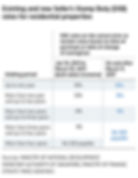The Seller’s Stamp Duty (SSD) for residential properties in Singapore was imposed on 20 Feb 2010, in an effort to curb speculation in the real estate market.
Now before we start grumbling (cause it’s us Singaporeans’ favourite pastime) again, there are pretty obvious reasons behind it.
Disclaimer: This is NOT a sponsored post by the government lol.

When we look at the Property Price Index (PPI) after the Global Financial Crisis in 2007, the market started recovering rapidly from mid-2008.
This sparked off a wild bull run which lasted for almost 5 years before all the new cooling measures worked effectively enough together to subdue it.
Why the SSD was implemented
Prior to the TDSR “Mother of All Cooling Measures” in 2013, speculators in the market were largely responsible for the skyrocketing trend seen between 2008 and 2013.
An example of such:

$521,150 in just 3 days! How insane is that!
Since there weren’t as many cooling measures during that time back in Jan 2010, speculators were flipping properties like pratas (and also like our HSR..if you get what I mean).
Even the annualized gains percentage figure was way off the charts!
While this “owner” is kind of “glorified and admired” for his extreme returns and foresight, what this essentially means is that property prices were artificially inflated very quickly to sky-high values, mostly just based on speculative demand, and not genuine demand backed by actual economic growth.
Although one case by itself may not make much of a difference to the market, cases like this happening on a large scale basis poses a lethal threat to the stability of the market.
The authorities knew that if this goes on unchecked, we may quickly see another mega property crash akin to, or even worse than that of the Asian Financial Crisis between 1995 and 1998!
As such, they had to come up with measures to specifically combat the cases of “flipping”, before deciding to re-impose the SSD, which was previously suspended back in Dec 1997.
Since then, the SSD has undergone several facelifts, with the latest changes highlighted in blue as follows:

What are the effects of the SSD?
The latest round of SSD implementation imposes a 3-year holding period for both residential and industrial (which we will not be focusing on today) properties.
For residential properties, as long as you sell your property within 1 year from the option exercise date, you will be liable for a 12% stamp duty, and vice versa.
What this means is that owners are basically being “forced” to hold on to properties for a minimum of 3 years if they do not want to pay that hefty stamp duty due to the sale.
For instance, John selling a $1 million property that he purchased 6 months ago will have to pay up an additional $120,000 in addition to legal and agent fees!
A very good recent example would be our most-expensive condo billionaire owner James Dyson, who famously purchased the most impressive penthouse we’ve ever had on local soil just last year in July 2019.

Unfortunately, during the Covid-19 downturn, for undisclosed reasons, Dyson decided to sell off his prized possession just slightly passed the 1-year mark in October 2020.

At a sale price of $62 million to the next owner, James Dyson is taking a $11.8 million loss just based on price tag. On top of that, there are still many other taxes which contributed to a even larger loss amount.

Ouch!
Just from being liable for SSD within less than 2 years of holding period set him back an additional $4,960,000!
We're sure a quick glance at that amount alone is enough to sink most of our hearts for a long time to come.
Then again, the $20+ million loss in total might be chump change for a globally-famous billionaire.
He probably sees it as a marketing expense in return for all that headlines coverage from all the media outlets.
Therefore, since no one can guarantee that their next buyer will be confident of forking out way higher prices within a short period of time to cover that 12% SSD, especially with all the other cooling measures in place, not many people would dare to take that risk to gamble for quick, high returns anymore.
Suddenly, “flipping” doesn’t seem that appealing anymore isn’t it?
How does the SSD affect us mere mortals?
Since we are tied down by a minimum holding period of 3 years, we need to plan our every move very carefully.
Everyone has a limited investment timeline up to the age of 65, beyond which the banks would be reluctant to loan you more money for property purchases.

Be it buying for own stay or investment purposes, it cannot be as simple as some of these cases anymore:
“Oh I wanna buy a place close to my son’s primary school and stay there for a year before he graduates from primary school, then I’ll shift nearer to my daughter’s school”
“I see this property that seems undervalued by 10% and I’m looking to sell it in one or two years’ time for a profit”
“I bought this unit that I really love, but my neighbour is giving me nightmares with their constant noises so I’m looking to sell it now”
Neglecting to factor in a minimum of 3 year holding period will cost us dearly in the form of the countless stamp duties that we are already liable for.
While Singaporeans are famous for our “patience” in long queues, always “waiting for the right time” may not be a very wise idea most of the time.
To provide an illustration of how SSD can affect our financial returns, we'll take a look at two recent case studies:
Case Study 1
For the first case study, we zoom in on High Park Residences, which saw hot competition on ballot day despite being in a rather unfavourable location.
When comparing two different stacks here, we try to do an apple-to-apple comparison, whereby both are on similar storeys, road-facing and not facing any west sun etc.

In the example above, we see two very similar units, yet very stark differences when it comes to profit margins.
Did #25-39 had a secretly better facing?
Rather unlikely, given that it is facing the tennis court. (Unless pok, pok, pok is our favourite sound…)
What could have contributed to this vast difference in profitability?
Before we dive into the explanation, let’s move on to Case Study 2 first.
Case Study 2
In this example, we examine a curious case of 2 different resale units of the same stack in Commonwealth Towers.
Most people would have chosen the #39 floor right?
Let’s examine further.

#03-07 was sold on 1st June 2018 for a profit of $345,189, while #39-07 was sold on 29th Nov 2018 for a $131,200 gain.
Yes, you didn’t see that wrongly.
The lower floor one somehow made almost 3x the profit of the high floor unit.
Well, most people would be puzzled too.
Why is this so?
The Answer You’ve Been Waiting For
You see, part of the reason why both case studies had such difference in profit margins was that the market was handed a big round of cooling measure on 6th July 2018.
1) Now, take a look at the resale dates of the two units again in Case Study 1, High Park Residences.
Despite largely similar facings and levels, #24-06 made $195,184, while #25-39 made $354,880, a difference of $159,696 in profits!
An interesting fact is that #25-39 was let go on 27th Feb 2018, when the market was still hot from a lifting of the SSD cooling measure on March 2017.
Conversely, #24-06 was sold on 30th Dec 2019, more than a year after the market cooldown from the July 2018 cooling measures.
2) For Case Study 2, in Commonwealth Towers, let’s also focus on the resale dates of the two units in question.
The seller of #03-07 managed to get out on 1st June 2018, one month before the cooling measures kicked in.
For the seller of #39-07…he got out too late. The market’s bull has already shown signs of a weary soul after the cooling measure by 29th Nov 2018.
Just imagine how much a profit difference of $213,989 can do for you!
“So What Is The Issue With The Resale Dates?”
Let’s put ourselves in the shoes of the sellers of the lesser profitable units in both case studies.
If we’ve waited a little long and got into the development less than 4 years (4 years SSD before March 2017) before 6th July 2018, would we have chosen to bite the bullet and pay 4% or 8% worth of SSD to sell before the cooling measures?
Of course, nobody would have expected the cooling measure to kick in after that night on 5th July.
But if we’ve purchased our units early and cleared our SSD period, at that point if we’re the owners, we would have had that choice to get out. With NO SSD.
Because there were investors who had yet to clear their SSD period, most were reluctant to bite that bullet to sell early and pay up the additional taxes.
Instead, they would have chosen to wait.
As a result, the difference in profit margins ended up even more than the SSD payable!
“So What’s Next For Me?”
If you have been planning to make your next real estate move, or wondering if you should even make a next move in the coming months/years, especially for investment purposes, you may not actually have that perceived luxury of time.
Other than the fact that our land prices are soaring at rather astronomical levels, on a more micro-level, we need to factor in the SSD period into our investment horizons.
There is no right or wrong in the preference to wait, but before we make that choice, it is only prudent to educate ourselves as much as possible regarding the latest market direction so that we do not eventually regret our choice.
And if you feel that my analysis makes sense to you, and that I can provide some suggestions leading you towards the best decisions for yourself, do drop me a text at 91499929 and I’ll be happy to assist you to the best of my abilities.


